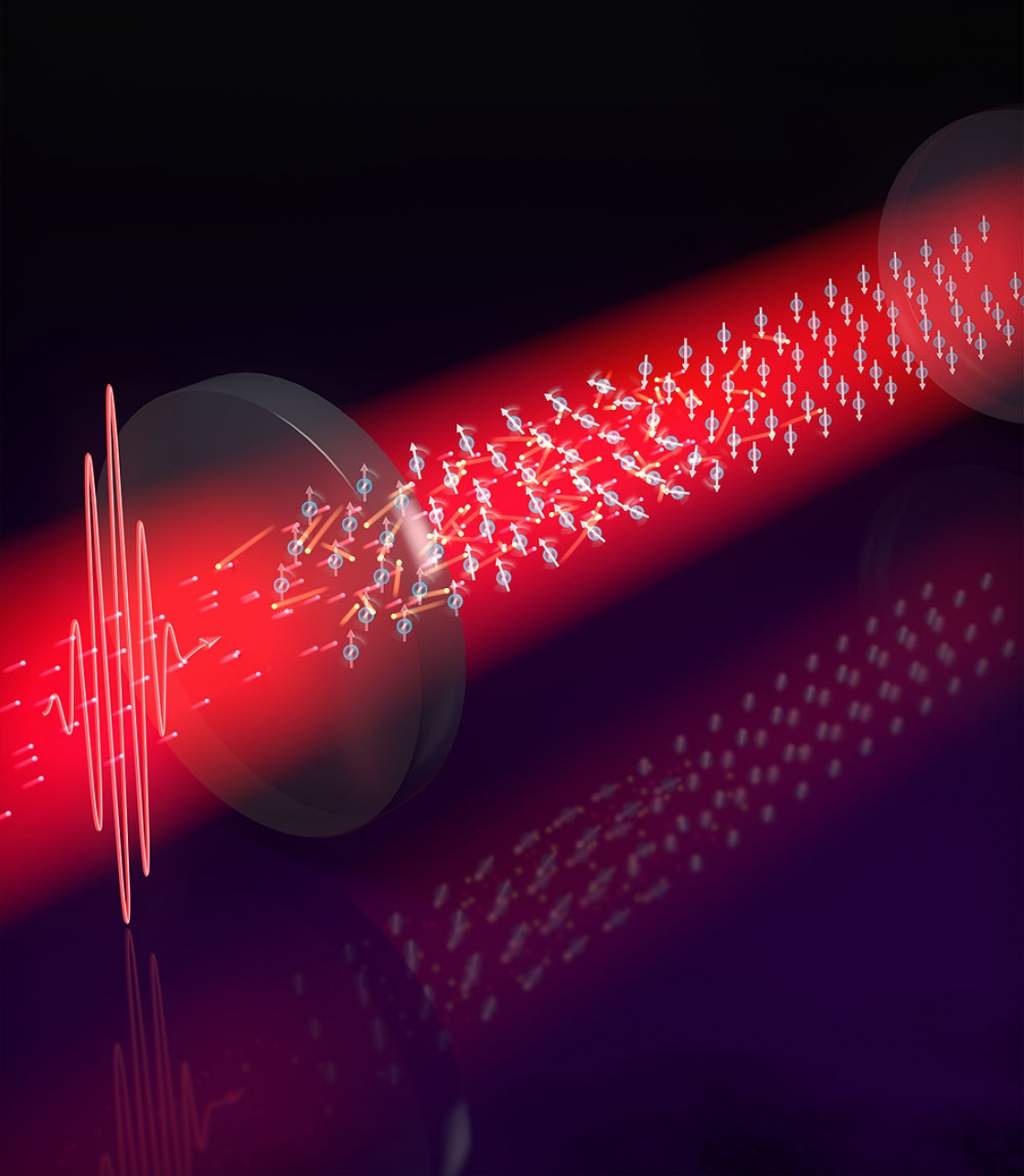The world is out-of-equilibrium, said JILA Fellow Ana Maria Rey. All around us systems are constantly in flux, from our living bodies to the weather and the stock market. These systems aren't settled in a final state.
Equilibrium systems are stationary; they don't change in time, said JILA Fellow James Thompson. And after a hundred years of research, we have developed tools to understand what happens in a system at equilibrium, Rey added. But when it comes to understanding an out-of-equilibrium system, many questions remain.
"We are out of theory," Rey said. "One of the challenges that we have at the moment is trying to understand out-of-equilibrium matter and how it tends to organize."
Rey and Thompson teamed up to create a controllable, non-equilibrium macroscopic system in the lab, so they can study how it behaves when you tune individual parameters. What they found could pave the way for a new foundation in our basic understanding of physics.
Atoms playing catch
Studying the organization principles of out-of-equilibrium systems requires a highly tunable system, Rey said, so Thompson put a million atoms in a one-dimensional lattice inside an optical cavity. In this setup, the atoms have the opportunity for all kinds of interactions.
By shining a laser onto the cavity, they are able to inject photons that act like baseballs, and the atoms start playing a quantum game of catch. If they catch the photon-baseballs, they start spinning. If these atoms couldn't interact with each other, they would spin freely, flipping over, Rey explained. But each atom is interacting with all others in the array-and if their partners aren't catching the photons and flipping over, then they won't either.
In this case, atomic interactions occur by exchanging virtual cavity photons, which act slightly different than the injected photon-baseballs.
"Essentially an atom throws a photon into the cavity mode. It bounces back and forth and any atom is able to reach up and grab it," Thompson said, and throw it back.
Interactions between atoms want to keep them pointing all at the same direction. "If he's down, I want to be down. So, in principle, the atoms want to be aligned," Rey explained.
In a quiet cavity the atoms don't want to play catch. But when the intensity of the injected photons (i.e. the number of photon-baseballs per second) increase, the atoms' behavior changes.
"If you just throw enough photons, eventually atoms start catching these photons, ignoring others. Catching the baseball is equivalent to start spinning up and down," Thompson explained. "If they don't have a ball in their hand, they prefer to remain aligned with their peers and point down."



 The Physics Frontiers Centers (PFC) program supports university-based centers and institutes where the collective efforts of a larger group of individuals can enable transformational advances in the most promising research areas. The program is designed to foster major breakthroughs at the intellectual frontiers of physics by providing needed resources such as combinations of talents, skills, disciplines, and/or specialized infrastructure, not usually available to individual investigators or small groups, in an environment in which the collective efforts of the larger group can be shown to be seminal to promoting significant progress in the science and the education of students. PFCs also include creative, substantive activities aimed at enhancing education, broadening participation of traditionally underrepresented groups, and outreach to the scientific community and general public.
The Physics Frontiers Centers (PFC) program supports university-based centers and institutes where the collective efforts of a larger group of individuals can enable transformational advances in the most promising research areas. The program is designed to foster major breakthroughs at the intellectual frontiers of physics by providing needed resources such as combinations of talents, skills, disciplines, and/or specialized infrastructure, not usually available to individual investigators or small groups, in an environment in which the collective efforts of the larger group can be shown to be seminal to promoting significant progress in the science and the education of students. PFCs also include creative, substantive activities aimed at enhancing education, broadening participation of traditionally underrepresented groups, and outreach to the scientific community and general public.